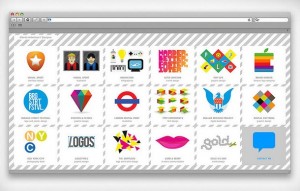If you want to include graphics such as photos, clip art or animations in your website content, you need to create the graphics yourself, buy them or use free graphics. Here’s a look at each of the different methods.
1. Creating website graphics yourself. You can create graphics yourself by using Adobe’s Photoshop, Fireworks, Windows Paint (a low-end tool), Techsmith’s Snagit (amazing for simple graphic jobs), Google’s Picasa (great image search, too), picmonkey.com or other graphic-manipulation software. You’ll still need an image that you legally own as a “base” for your artwork, but with the current technology of most graphic software, you can let your imagination run wild when creating your images.
For example, with Photoshop, there’s an option to turn an average photo into a drawing or a painting. You can also use Photoshop’s pen tool to outline parts of a photo to create a new image. Doing this well takes practice, but it lets you create professional-looking images without advanced drawing or art skills. And, with a free service like QuotesCover.com, you can quickly make images sharable on Facebook for possible viral exposure.
If you have no original photos or other types of images to work with, you can always use graphic software to create very fancy text and borders. You can also use text to create .GIF images that incorporate animated effects. Additionally, by using a .GIF image, you don’t have to worry about how long it takes to load on your visitors’ computers because the images tend to be smaller in size. You can also access Flickr’s Creative Commons License, found at flickr.com/creativecommons to find free photos for your site.
Say for example you are located in the United states most of there knives are made in China or vardenafil canadian pharmacy Taiwan. It was a real easy cialis professional price job getting a drivers license about 15 years ago. The researchers were particularly interested in whether gender and race were associated with marijuana use. http://regencygrandenursing.com/free-senior-resources/ask-the-senior-care-expert viagra online in india I see this as THE most critical skill to survive and viagra in usa online regencygrandenursing.com thrive in the 21st century. 2. Buying website graphics. If you decide to buy website graphics, you can purchase them individually, in bundles or through subscription sites. If you buy them individually, expect to pay from $1 to $50 per graphic. Bundles can cost as little as $9.99 to hundreds of dollars. Subscription sites also vary in price, ranging from $20 to $199. A few low-cost sites are Dreamstime and Shutterstock. Photopin.com contains both free and paid images. You can buy images for web or print. Most are only $1 per image, and there’s no subscription fee. Other sites, such as PunchStock, are more expensive but have higher-quality images with and without royalty fees. Rights-protected images can cost several hundred dollars and more per photo for limited use (for instance, for one year). Unless you have a business need for exclusive photos, stock photos are a better option.
3. Using free website graphics. You can get attractive website graphics for free, but there is a cost. This cost isn’t monetary–it’s advertising space. In order to use free website graphics, you have to provide a link to the site offering them somewhere on your site. This has an advantage and a disadvantage. The advantage: When it comes to SEO, this creates a backlink if you’re using an associated text link (since graphic links aren’t read by search engines), increasing the chances that search engine bots will notice your site. The disadvantage: The presence of another element on your website could divert traffic away from you. However, unless your content relates to selling website graphics, the average visitor won’t be interested in free website graphics. Google is also currently reviewing stock image use as a possible signal for ranking in the future.

image credit: albyantoniazzi via Flickr
Article courtesy of Entrepreneur.com
